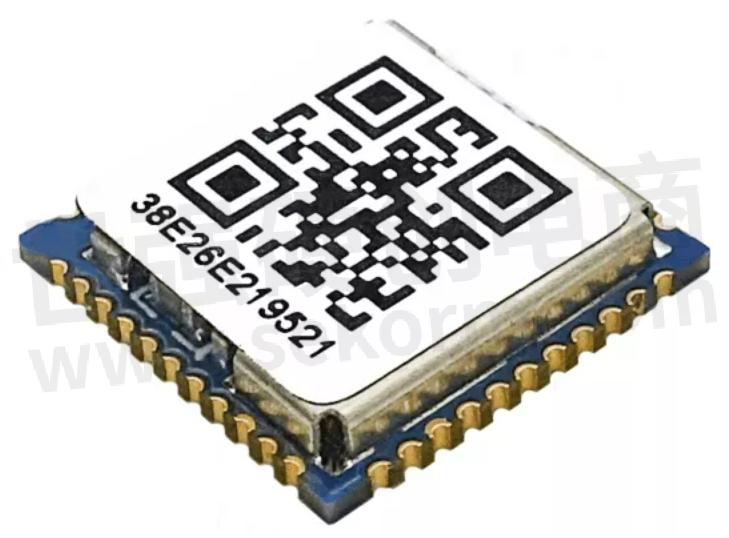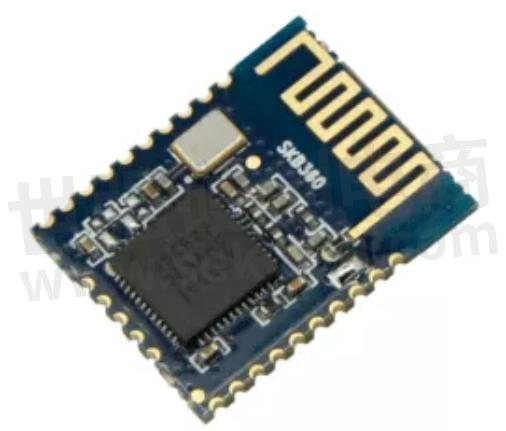Features of Smallest Bluetooth Low Energy Module

The smallest Bluetooth Low Energy Module can use in many ways and contexts, so we present just a few examples below.

Many of the current Windows and Linux operating systems support Bluetooth by default. A chip integrated into the hardware allows the connection of various peripherals such as mice, keyboards, headsets and printers. Radio technology is also used for security tokens in the context of two-factor authentication.
◆ Mobile and Audio devices
The smallest Bluetooth low energy module chips integrate into virtually all modern mobile phones and tablets and can, for example, use to synchronize files, photos and videos with your home computer.
Many wireless speakers and headsets equip with Bluetooth, which allows you to play MP3 files directly from your smartphone.
◆ Hands-free systems
If the smartphone pairs via the smallest Bluetooth low energy module with the hands-free system of the car radio or motorcycle helmet, it is possible to answer incoming calls directly. In well-equip vehicles, the on-board computer.
It is also compatible with radio technology so that the cockpit display can use to navigate through the contacts and menus of the mobile phone.
◆ Fitness equipment and smart home technologies
Some fitness trackers and smartwatches send health data via Bluetooth directly to a dedicated application on the smartphone. Kitchen appliances, alarm systems, electronic keys and digital photo frames that support Bluetooth technology also contribute to the worldwide success of smart home systems.
◆ Toys and Game Consoles
The toy industry is constantly introducing new dolls and action figures to the market that can communicate and interact with each other via the smallest Bluetooth low energy module. Even the controllers of popular video game consoles such as Nintendo Switch, PlayStation 4 and Xbox One work with the radio standard.
◆ Smallest Bluetooth medical technology
Hearing aids in the higher price ranges can equip with hands-free functions thanks to Bluetooth. It also allows you to wirelessly configure state-of-the-art arm and leg prosthetics, insulin pumps and blood glucose meters.
◆ Industry
Finally, wireless communication technology favors the progression of the sector itself by networking machines and production plants, thus allowing the production processes to be largely automated.
What Bluetooth versions are there?
The first version of the new radio standard, Bluetooth 1.0a, came out in mid-1999, then with a data rate of 732.2 kbit / s. However, just like the later version 1.0b, it struggled with some teething flaws and security issues.
Only with Bluetooth 1.1 (early 2001) did it manage to create a solid foundation for marketable products. Since then the system has been continuously developed and improved with a focus on security, interference resistance and connection speed.
What is BLE technology?
The smallest Bluetooth low energy module is a low-power wireless communication technology that can use over short distances to allow smart devices to communicate with each other.
Some of the devices you interact with every day such as smartphones, smartwatches, fitness trackers, wireless headsets, and computers are using BLE to create a seamless experience.
The smallest Bluetooth low energy module is a relatively new Bluetooth standard "designated" by SIG (Bluetooth Special Interest Group) with a focus on improving energy efficiency when transmitting data.
BLE has a wide range of capabilities and deploys in a wide range of sectors such as health, fitness, security, home automation, home entertainment, and smart industry. It also works on familiar everyday devices such as smartphones and laptops that you are using.
Apple early adopted BLE on smartphones through the release of the iPhone 4s in 2011. Today, the majority of Android and iOS devices on the market use BLE to communicate and interact with devices. The popularity of smartphones has allowed this Bluetooth technology to appear worldwide.
How does BLE work?
It can use in communicating with other devices. These attributes define using the GATT (Generic Attributes: generic attribute) configuration.

These characteristics represent values as small packets of information that can change over time.
Properties can define to hold values in a read or write fashion. Peripheral devices that provide read-type characteristics will typically disclose information to the hub to send data out. Peripherals that provide a write-type feature typically have an interface to receive data from a hub.
Let's say we have a peripheral that implements the smallest Bluetooth low energy module to provide temperature readings from the sensor. This peripheral will have a readout temperature characteristic with the current temperature value set on the characteristic.
When the temperature changes, the peripheral will update the characteristic value. A connected central device such as a computer or smartphone then registers changes on that peripheral property to provide real-time updates of the BLE temperature readings from the device peripheral.
The smallest Bluetooth low energy module data is sent and received as small data packets. In BLE 4.0 and 4.1, the maximum data size is 27 bytes. The data packet also contains a 4-byte header making the total packet size 31 bytes.
BLE has mobile API functions
Apple and Google both provide BLE APIs as part of their respective mobile development software development kits (SDKs). Apple's CoreBl Bluetooth API is used across many of their device operating systems including iOS, watchOS, macOS, and tvOS.
The Smallest Bluetooth low energy module for mobile devices
Current versions of Android and the Android SDK that support BLE implementations standardize across all Android devices. Previous generations relied heavily on device manufacturers for individual BLE implementations.
How to use BLE to enhance the interactive experience?
In recent years, device manufacturers have improved the BLE communication interface to enhance the product user experience. As devices become smarter, their data can exchange much faster thanks to new standards of the smallest Bluetooth low energy module technology.
Bluetooth is generally suitable for processing, transmitting and exchanging large amounts of data (e.g. in the audio, and video). However, it will consume more power and be more expensive.
The smallest Bluetooth low energy module is suitable for applications that do not require the transfer of large amounts of data, so only a small amount of data information can recover. And thanks to that, the device can run on battery power for many years at a lower cost than Bluetooth because it does not require a constant connection.
- +1 Like
- Add to Favorites
Recommend
- Fujitsu Launches the FWM7BLZ23: a New Bluetooth low energy module with Large Memory of 1024KB Flush and 256KB RAM
- Hosiden Launched Fast and Flexible Bluetooth Low Energy Module HRM1079 and HRM1062 with Embedded Software
- Hosiden‘s Low-cost Bluetooth® Low Energy Module HRM1092 Supporting Bluetooth®5 for Beacons,Toys,and Wireless Products
- 6 Facts about Low Energy Bluetooth ble Module
- Skylab lanuched a 1.8μA Ultra Low Energy Bluetooth Module SKB378 for Smart Home
- New RX23W Module with Full Bluetooth® 5.0 Low Energy Support for System Control and Wireless Communication
- Hosiden‘s Bluetooth® 5.0 Compatible Module HRM1079 Adopts Nordic nRF 52832 WLCSP Package with Occupied Area Minimized to 45%
- What are the Functions of the Smart Construction Site Personnel Positioning System?
This document is provided by Sekorm Platform for VIP exclusive service. The copyright is owned by Sekorm. Without authorization, any medias, websites or individual are not allowed to reprint. When authorizing the reprint, the link of www.sekorm.com must be indicated.






























































































































































































































































































































































































































































































































































































































































































































































































































































































